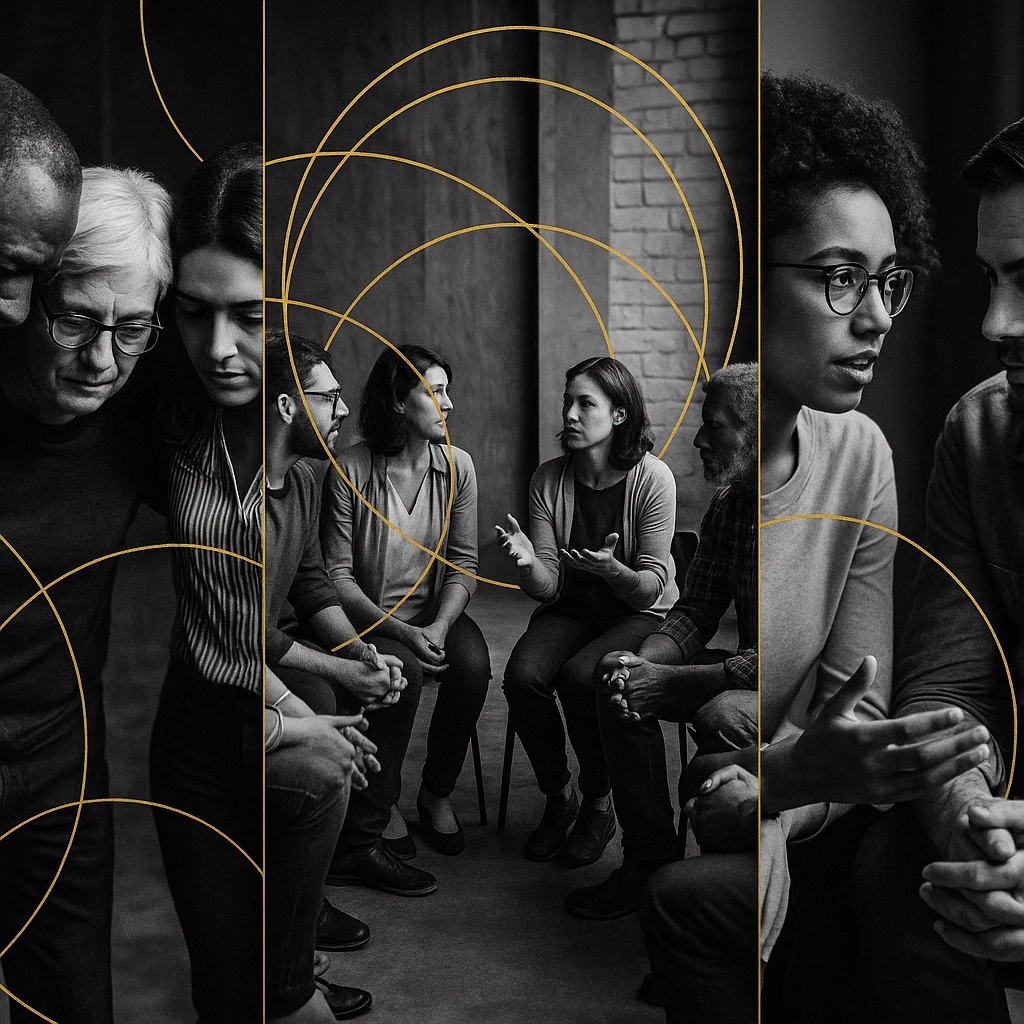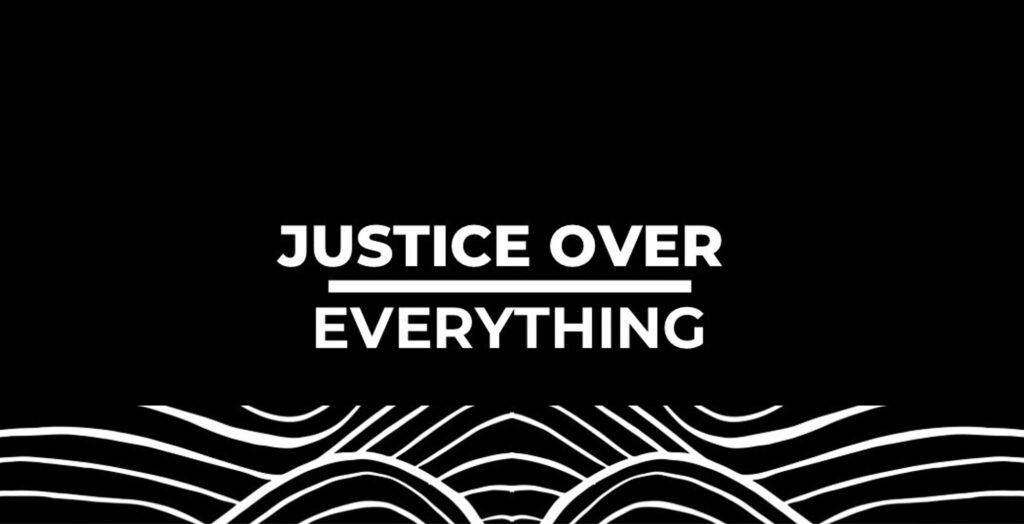The Human Element: The True Driver of Transformation
In our work with organizations across Florida and beyond, we’ve observed a consistent pattern: the most successful transformations aren’t driven by perfect strategic plans or cutting-edge technologies—they’re powered by people. While processes and systems provide structure, it’s the human connections, commitments, and capabilities that ultimately determine whether change takes root or withers away.
At Justice Over Everything (JOE), we’ve found that organizational change thrives when it’s built on three interdependent pillars: strong coalitions, supportive communities, and effective coaching. When these elements align, even the most ambitious justice-centered initiatives can flourish in challenging environments.
Building Powerful Coalitions: Beyond the Usual Suspects
Coalitions—strategic alliances of diverse stakeholders united by shared goals—form the backbone of sustainable change. However, many organizations make the critical mistake of limiting coalition-building to executive leadership.
What we know the most resilient coalitions span hierarchical boundaries.They include voices from the frontlines alongside those from the C-suite, creating a multi-dimensional change ecosystem.
Effective coalition-building requires:
1. Identifying Hidden Champions
Look beyond formal leadership roles to find the natural influencers—those whose opinions carry weight regardless of their position. These “hidden champions” often determine whether change initiatives gain traction or face resistance.
With this you must be prepared to shift or adjust culture. As a culture we are used to change leaders being at the front, this requires humility and acceptance of a new normal.
2. Creating Shared Ownership
When stakeholders help shape the change rather than simply implement it, psychological ownership develops. This transformation from “your initiative” to “our initiative” catalyzes authentic commitment.
This change also expands the power potential, We know 2 minds are indeed better than 1, we want to multiple that exponentially.
3. Balancing Diverse Perspectives
The strongest coalitions incorporate both supporters and skeptics. By including constructive critics early, you gain valuable insights that strengthen your approach while converting potential resistance into engagement. We offer this with the caveat that the critics you invite must be constructive, contrarian viewpoints for the sake of disagreement can slower even stall the process.

The Community Factor: Creating Conditions for Collective Change
While coalitions provide direction and momentum, communities create the cultural soil where change can flourish. Community-building transcends traditional change management by focusing on relationships, trust, and psychological safety.
Our recent work with a major Florida nonprofit coalition revealed that organizations prioritizing community-building were 3.5 times more likely to sustain meaningful change compared to those focusing solely on technical implementation.
Psychological Safety: The Foundation of Authentic Change
When people fear judgment or repercussion for speaking honestly, change becomes superficial compliance rather than genuine transformation. Creating environments where team members can voice concerns, ask questions, and propose alternatives transforms resistance from an underground current into a constructive force.
Shared Learning Environments
Communities that learn together change together. By creating structured opportunities for collective reflection and skill-building, organizations can accelerate adoption while deepening connections among team members.
“In our justice work, we’ve found that learning communities break down silos that often plague organizations,” notes Dr. Byron Green Calisch, JOE’s Community Building strategist . “When people from different departments or levels explore new approaches together, cross-pollination happens naturally.”
Celebrating Small Wins
Major transformations don’t happen overnight. Communities that acknowledge incremental progress maintain momentum during the inevitable challenges of significant change. Regular recognition of small victories creates a positive reinforcement cycle that energizes continued effort.
Coaching: The Critical Bridge Between Vision and Reality
Even with strong coalitions and supportive communities, individuals need personalized support to navigate the personal transitions that organizational change demands. This is where coaching becomes indispensable.

Moving Beyond Traditional Training
While training provides essential knowledge, coaching develops the contextual wisdom to apply that knowledge effectively. At JOE, we’ve seen organizations waste substantial resources on comprehensive training programs that fail to translate into behavioral change because they neglect the coaching component.
The Emotional Landscape of Change
Organizational change triggers complex emotional responses that vary widely among team members. Some embrace new possibilities with enthusiasm, while others experience loss, uncertainty, or fear. Skilled coaching acknowledges these emotional realities and provides tailored support for navigating them constructively.
Resistance to change isn’t irrational—it’s a natural human response to disruption Effective coaching honors these responses while creating pathways forward that honor both individual needs and organizational goals.
Developing Change Capability
The most valuable outcome of coaching isn’t just implementing a specific change—it’s developing change capability that serves organizations through future transitions. By helping individuals recognize their strengths and growth edges in relation to change, coaching builds lasting resilience.
The Synergy Effect: When Coalitions, Community, and Coaching Converge
While each of these elements—coalitions, community, and coaching—delivers value independently, their true power emerges when they work in concert. This integrated approach creates a self-reinforcing cycle:
- Coalitions provide strategic direction and mobilize resources
- Communities create supportive environments for experimentation and learning
- Coaching develops individual capabilities that strengthen both coalitions and communities

Real-World Impact: A Florida Case Study
When the Florida Housing Justice Alliance (a pseudonym) faced the challenge of advocating for significant policy reform in an increasingly polarized environment, they initially focused exclusively on technical aspects: research, policy papers, and legal strategies. Despite solid analysis, their efforts gained minimal traction.
Working with JOE, they pivoted to a people-centered approach:
- Coalition-Building: They expanded their leadership coalition beyond housing experts to include affected community members, unexpected allies from the business sector, and even some moderate opponents willing to engage in dialogue.
- Community Development: Rather than treating their organization as simply an advocacy machine, they invested in creating a learning community where staff and volunteers could process challenges, share insights, and support each other through difficult advocacy work.
- Coaching Support: They provided targeted coaching for key leaders and frontline staff to develop resilience, manage conflict constructively, and adapt messaging for different stakeholders.
The results were transformative. Within eighteen months, they had secured significant policy changes that had previously seemed unattainable, while simultaneously strengthening their organizational culture and individual leadership capabilities.
Practical Starting Points
Ready to shift toward a more people-centered approach to change in your organization? Consider these entry points:
Coalition Assessment
- Who are the formal and informal influencers relevant to your change initiative?
- Whose perspectives are currently missing from your coalition?
- How might you create meaningful involvement (not just token representation) for diverse stakeholders?
Community Strengthening
- What current practices support or undermine psychological safety in your organization?
- Where do people currently gather to make meaning of their work together?
- How might you create more opportunities for authentic connection around shared purpose?
Coaching Integration
- What specific transitions are most challenging for people in your current change context?
- How are you currently supporting individuals through these transitions?
- What additional coaching resources might help bridge the gap between your vision and daily implementation?
The Path Forward
At Justice Over Everything, we’re committed to supporting organizations in creating change that starts with people and ripples outward to transform systems. Whether you’re advocating for policy reform, restructuring your organization, or shifting your programmatic approach, we believe that investing in coalitions, communities, and coaching creates the foundation for lasting impact.
As you consider your next change initiative, remember: the technical components matter, but it’s the human elements that ultimately determine success. By starting with people—their relationships, capabilities, and needs—you build change that doesn’t just get implemented, but truly takes root.
Ready to explore a more people-centered approach to change in your organization? Connect with our team to learn more about how our coaching and training services can support your journey.


